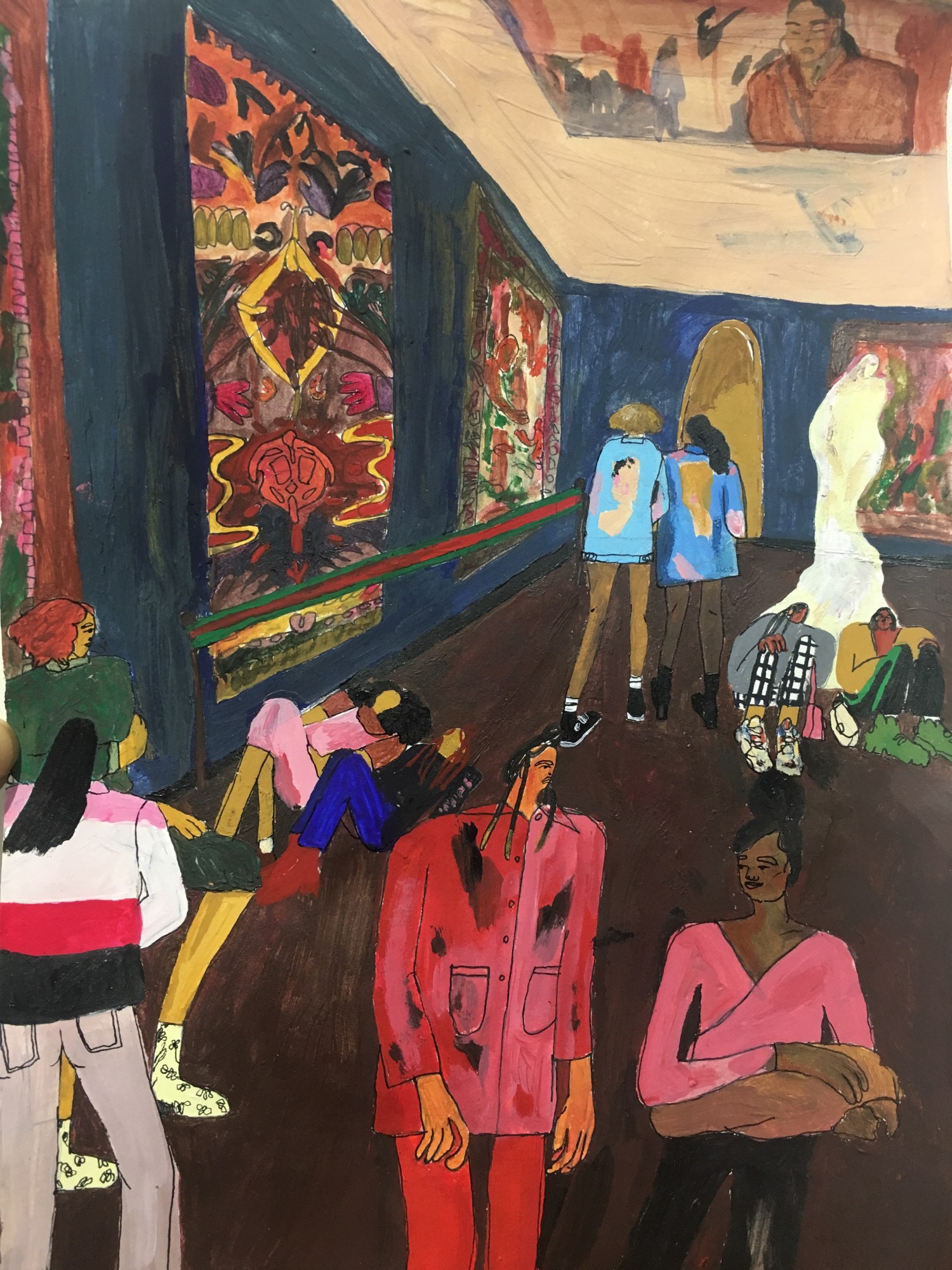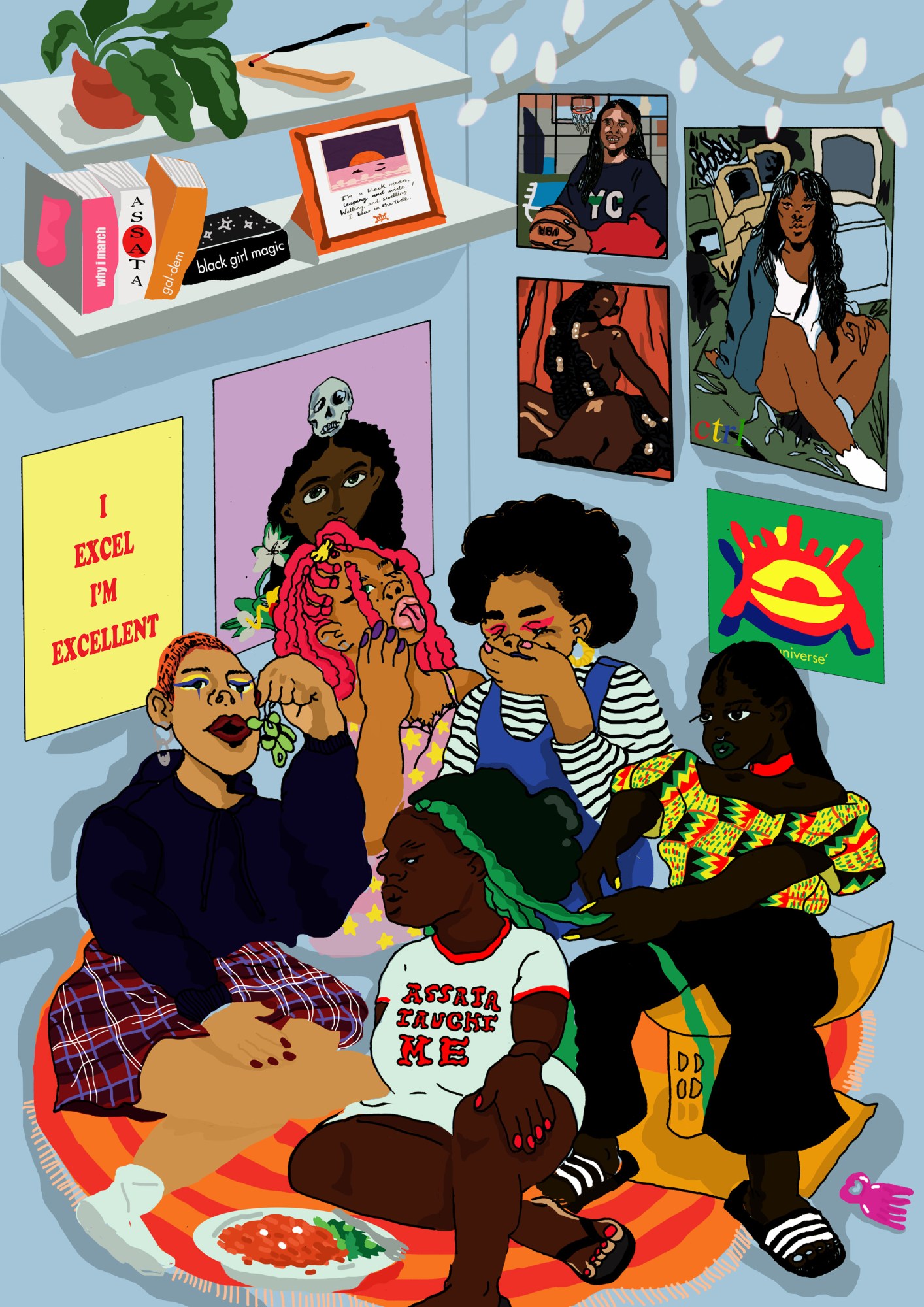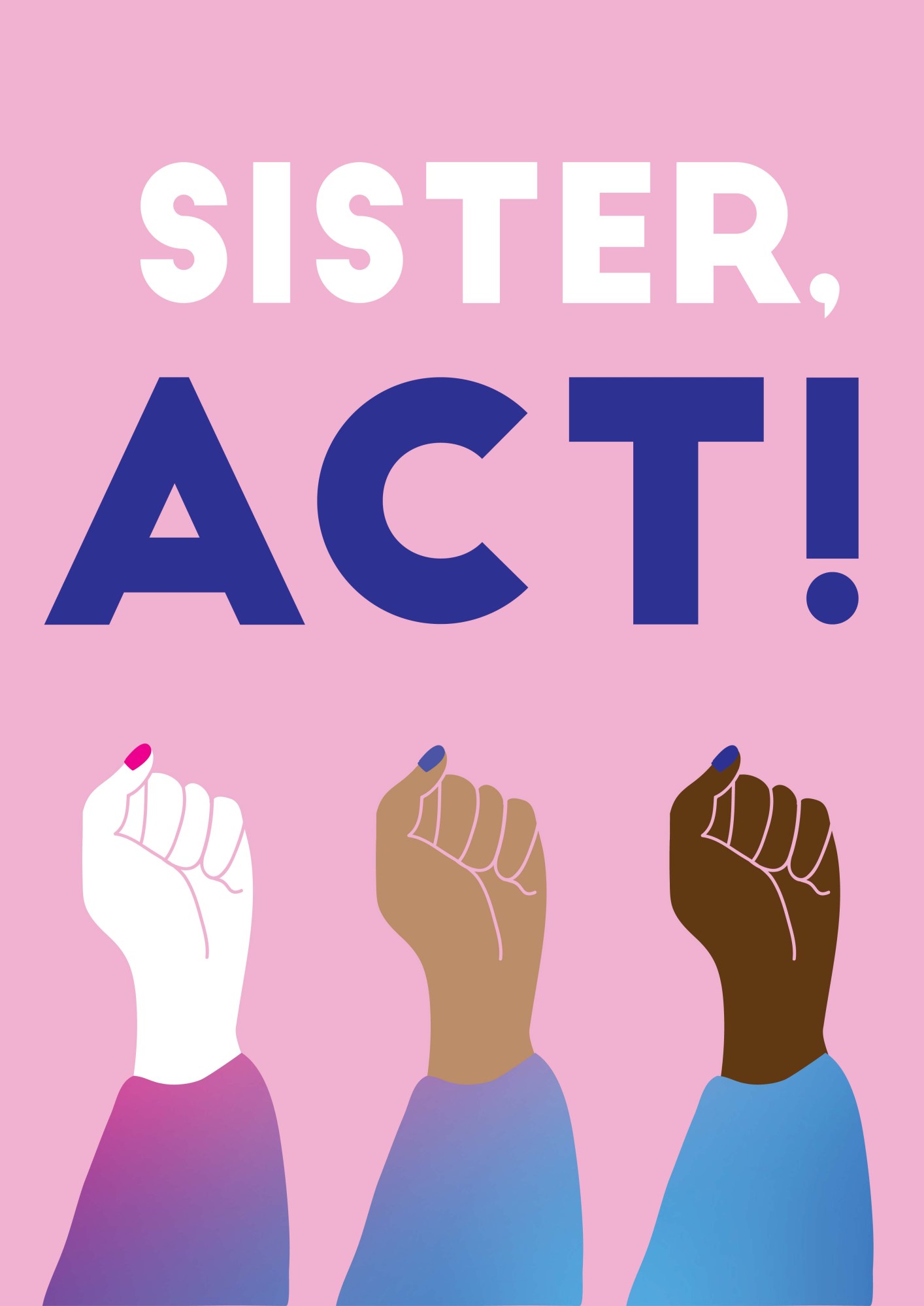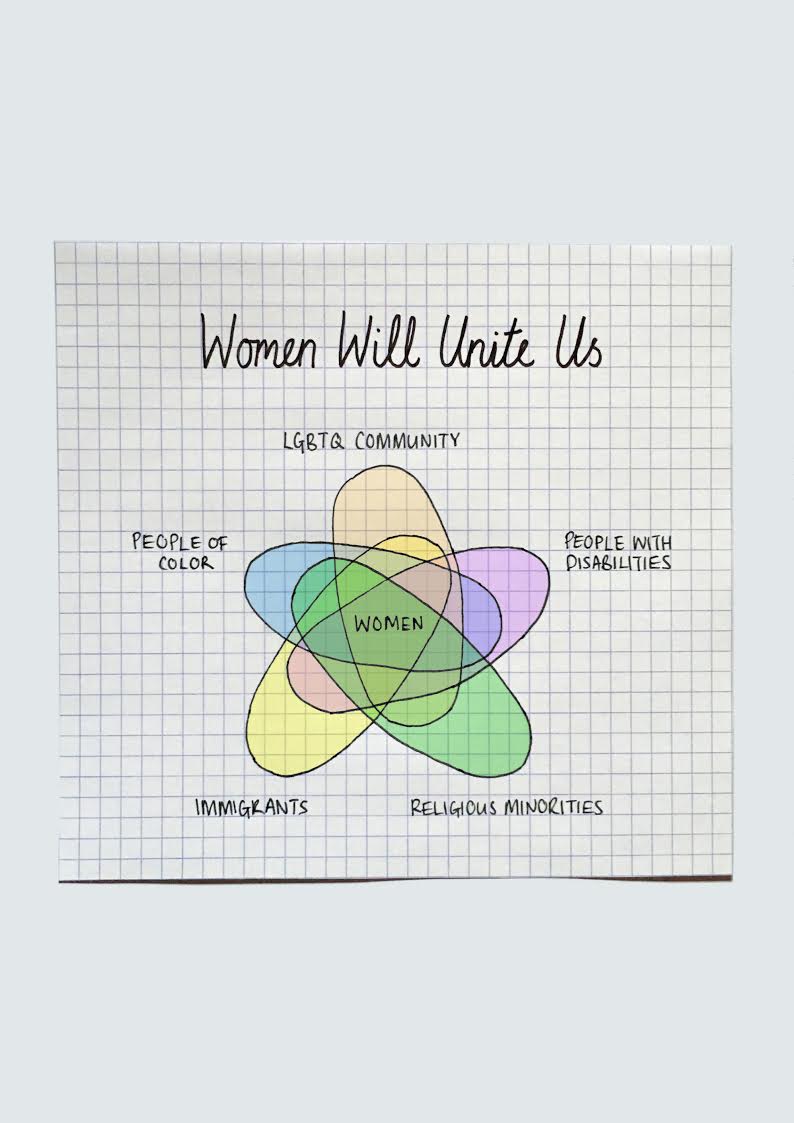Type “British people” into Google image search and the pages are awash with pictures of the Union Jack, the British Empire and a lot of white people. What you won’t see there, and rarely throughout the mainstream media, are British women of colour and their and contributions to British culture being acknowledged and celebrated. If anything, the idea that WoC can’t be or aren’t British, has long persisted.
Just take Diane Abbott — a remark made in 1988 about the UK as “one of the most fundamentally racist nations” was held as proof during the general election last May that she ‘disliked’ Britain and British people — as if she’s not herself British.
It was this exclusion that motivated artists Erin Aniker and Jess Nash to curate We Are Here, the first exhibition of its kind to celebrate Britishness and women’s suffrage from the perspective of BME artists. “We saw this huge spike in anti-immigration and inflammatory rhetoric against migrant communities, encouraged by the media,” Erin says. “We wanted this exhibition to explore and highlight how dated this idea of ‘white Britishness’ is, and create dialogue between communities about what it means to be British today.”

With an uncertain political climate post-Brexit, the exhibition couldn’t have arrived at a more poignant time. 21 artists are set to showcase their work, celebrating the multiplicities of being a British BME woman, while dispelling the myth that those identities are mutually exclusive.
Is there a need for We Are Here in a more ‘woke’ world? After all, the importance of diversity is increasingly being embraced across a number of industries. Just take Hollywood stars adopting inclusion riders. “I think we’re living in a world that’s waking up, but unfortunately it’s not as woke as it should be by now,” Jess tells i-D. “We’re creating a space to open up those conversations. So until the time comes that we’re not surprised to see an exhibition like this happen, I think it’ll continue to be important.”
While Erin does acknowledge that there’s been “more of a social awakening”, with the media increasingly “tapping into and providing more commentary on the gap between the male, white art world and BME women artists”, she concedes that this runs the risk of being tokenistic. “It feels that in some ways this has almost become the ‘latest trend’ for organisations, but I hope that this momentum continues, as BME women aren’t a passing trend or fad,” she says. “Diverse representation in the art world is desperately needed. We’re not going to wait around for a pale, male art world to allow us into their space. In the absence of the platform, we will simply create our own.”

For artists on show, how much is identity as a British BME woman integral to their art? Catherine Morton-Abuah, 20, a freelance illustrator, it plays a big part. “I’m constantly inspired, not only by my own experience navigating society as a black, British woman, but the experience and excellence of other black, British women,” she says. While this hasn’t been a constant for her — Catherine acknowledges she wasn’t always proud of her identity, she says it’s now something she counts as a blessing. “It brings so much vibrancy to my work and I’m glad that I can use my artwork to create much-needed representation.”
That’s not to say that straddling two conflicting identities is an experience all the artists share. Conversely, for others like Aleesha Nandhra, a London-based illustrator and printmaker, Britishness and her heritage can be, and is, complementary. “It really isn’t something that I actively think about when I’m making work,” she says. “Sometimes I want to create a piece that’s influenced by my Indian heritage, sometimes I don’t.”
When communities of colour have been significantly more affected in a turbulent socio-political climate, particularly post-Brexit — the vote saw the highest rates of religious and race crimes in the UK ever recorded — is an artist’s work now intrinsically political? ‘Othering’ is a universal part of the second-generation immigrant experience after all. While Catherine concedes it’s a “draining” experience to stay informed, her illustrations are a tool to spotlight the contribution that BME communities have made on wider British culture. “I create my work to re-affirm that although people are so set in their views, there is a space for us, that we do contribute majorly to society, especially culturally, and we aren’t leaving anytime soon,” she tells i-D.

When ‘self-care’ has been commercialised in recent years and rebranded as face masks and bubble baths, Catherine’s illustration Self-Care is particularly poignant. It strips the idea back, focusing on the healing power of being surrounded by black women. “The aim of the piece was to present black women taking care of one another, surrounded by other black artists that have inspired me, as seen through the music posters, SZA, Kelela etc. on the wall.”
For British Muslims in particular, identity has come under extreme scrutiny once again, with allegations that they’re not “British enough” by a seemingly never-ending mainstay of politicians and the right-wing press. Just take the idea that they silently side with terrorists, or even having to protest against terror attacks to prove to they don’t support ISIS.
In some respects, photography collective Muslim Sisterhood — who shared a series of stunning portraits for this exhibition championing Muslim womanhood by photographer Lamisa Khan and artists Zeinab Saleh and Sara Gulamali — is a reflection of the artists’ long struggle to embrace their identities as BME British Muslim women. Celebrating its duality is deftly interwoven in their work, from images of the models paying tribute to PoC-owned businesses, including halal butchers and corner shops, to being shot in west and south London boroughs, home to their respective diasporic communities.

As Lamisa says: “[Being a BME woman] means having a growing sense of sisterhood and finding others who have experienced similar confusion growing up in Britain. I found it difficult to justify the fact I was Muslim, South Asian and just as British as any other Lucy, Amy or Becky.”
“In the past, there’s been circumstances where I’ve had to pick between [all three identities],” Zeinab agrees. “The constant pressure of having to reassure people of my Britishness… is emotionally taxing. Although it’s taken a while, I’ve now come to embrace my intersecting identity as a Black British Muslim.”
For Sara, she feels “we only see two extremes. It’s either ‘British’ or ‘back home’. I call myself Pakistani but I’ve only been to Pakistan twice. Britain is my home. How can someone label me as an ‘other’ and connect me to a place I’ve hardly explored? Spaces like [ We Are Here] are the beginning of challenging that.”

When the veil has been hijacked as a symbol of ‘anti-Britishness’, and anti-European at that — last year Europe’s top court ruled that headscarves can now be banned at work — British-Pakistani graphic designer Soumbul Qureshi’s work My Choice, My Voice is particularly pertinent.
The veiled woman’s serene expression against a backdrop of soft pastels exudes a sense of calm and confidence.“ I wanted to capture a woman proud of who she is, culture, religion, background and all,” Soumbul says.
“I want to challenge the idea that Muslim women don’t belong. I want to portray them as people, not just part of the political discourse,” she affirms.
Ultimately, the curators hope visitors will rethink traditional art attitudes and value systems. As Jess says of their aim, “If they came in with a mind-set that the exhibition wasn’t necessary for them, [we want them] to leave knowing it is.”

We Are Here is open to the public from 14th – 18th March 2018 at LSE Library, 10 Portugal Street, London, WC2A 2HD
